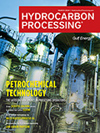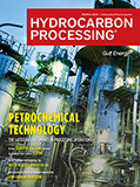Huchler, L. A.
HP Water Management: What should cooling tower owners do about legionella?
The first awareness of the risks of legionella bacteria in cooling water was the outbreak of Legionellosis at the hotel hosting the Legionnaires’ Convention in Philadelphia, Pennsylvania, in 1976..
HP Water Management: Best practices for RO operations
Widespread use of reverse osmosis (RO) technology in industrial applications began in the late 1980s, following the introduction of polyamide materials that had a significantly higher permeate flow an..
HP Water Management: The case for change
When should you change water-treatment suppliers? After a failure? When you are dissatisfied with the quality or price of your incumbent supplier? When you receive an attractively-priced proposal? Whe..
HP Water Management: Update: Online measurement of oxidizing biocides
Nearly all owners of industrial cooling towers feed oxidizing biocides—chlorine (Cl) and bromine (Br)—to kill bacteria in the recirculating cooling water. Minimizing the populations of bacte..
HP Water Management: Need a package boiler in a hurry?
Acquiring a package boiler is an unplanned event that requires process engineers to solve this completely unfamiliar problem. To reduce the chaos of replacing them, here are helpful ways to resolve this situation.
HP Water Management: Consider software tools for water reuse projects
The hydrocarbon processing industry needs reliable and economic sources of water for present and future operations. Ensuring a sustainable water supply requires a focused effort to evaluate the qualit..
HP Water Management: Avoid failures in water projects: Part 2
Last month, we discussed the need for project engineers to talk to process engineers about the water systems as a capital project takes shape. This month’s column discusses additional ways to bri..
HP Water Management: Avoid failures in water projects: Part 1
Your company is planning an expansion—building a new process unit or constructing an entire new plant. Regardless of the scope, the facility staff will specify project requirements, complete the ..
HP Water Management: Water is the next oil
In the future, increased demands for high-quality fresh water supplies will translate into voluntary and, ultimately, regulatory mandates. These constraints will require facilities to limit or to redu..
Mitigate refinery influent water supply contamination
Resolving critical water supply and quality issues by managing risk and implementing successful solutions

- Brazil's Timbro to export 40% more sugar, enter ethanol market in 2024 4/24
- LG Chem denies report it will merge naphtha cracker business with Lotte Chemical 4/24
- Crude and gasoline stocks fell, distillate stocks rose last week, EIA says 4/24
- INERATEC secures state-of-the-art catalysts from Sasol for the production of sustainable e-fuels 4/24
- JX to join forces with Sumitomo at large scale SAF/BECCS project in Louisiana (U.S.) 4/24
- WestJet buys first Canadian-supplied SAF by Shell Aviation 4/23




